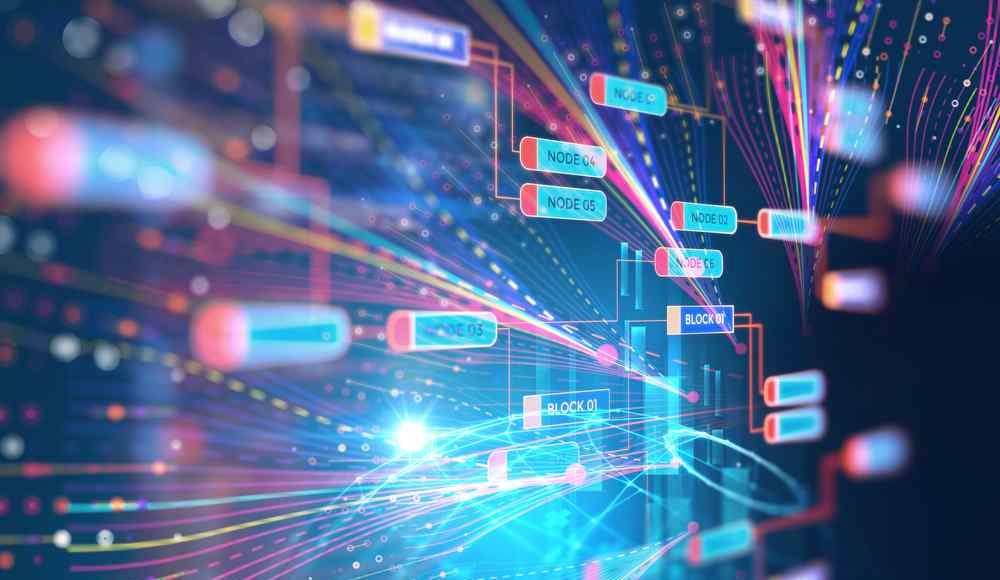AI-based audio transcription has revolutionized the way professionals across industries work. It enhances overall efficiency, costs, and time in the professional workspace.
Artificial intelligence (AI) has transformed people’s lives and businesses worldwide. One critical application of AI is AI-backed audio transcription, which accurately captures words from audio communication and converts hours of spoken content to text in a few minutes through speech recognition software.
Natural language processing (NLP) plays an integral role in speech recognition. It helps train and evaluate machine learning models with accurate and comprehensive datasets. The speech recognition dataset is one key dataset of NLP that is used for developing robust speech recognition and language understanding models.
AI has truly revolutionized the way spoken words and video files are converted into text. Please read the blog below to explore how audio transcription has evolved with AI, understand its mechanics, and consider its benefits and challenges.
AI Audio Transcription: The Evolution
Audio transcription has significantly evolved over the years. Earlier, the process involved manual efforts like;
- Listening to hours of audio using headphones
- Using software for modulating the audio quality and controlling the pace of speech
- Transcribing the audio recording onto a Word document via transcription software
- Quality-checking the transcribed document to ensure the accuracy of the transcription.
Now, the process has undergone significant advancements due to AI. AI technologies have enabled the conversion of speech files to text within a few minutes. It has opened up new avenues regarding how one interacts with and manages information. AI and machine learning (ML) enhancements have transformed the transcription process from a manual, time-intensive task with human errors to an automated, fast, and efficient process.
AI Audio Transcription: The Working
AI audio transcription utilizes AI, ML, and automatic speech recognition to analyze speech and language patterns. Once the input data is analyzed, the software converts the audio to text. Based on the training provided to AI-powered audio transcription, it can detect the emotions and intent behind the communicator’s messages.
The software’s functionality extends far beyond recorded messages. It includes audio and video clips, calls between customers and support teams, virtual conferences, and team meetings. AI audio transcription can extrapolate the context of sentences within messages and offer fluent translations.
AI audio transcription functions with one or more of the following processes:
Speech recognition: This software utilizes speech recognition algorithms for identifying spoken words and converting them into accurate text. Continuous training of the AI models enhances the software’s accuracy and efficiency.
Natural language processing (NLP): NLP in AI audio transcription helps understand text-based content and context and derives word meaning using machine learning algorithms. NLP and ML algorithms help ensure the quality and accuracy of the result.
Speech-to-text synthesis: This process converts text into speech and vice versa. It can also render linguistic representations into speech. The software is evaluated based on its output, resemblance to human speech, and ease of comprehension. It supports various formats like WAV, MP3, M4A, CAF, and AIFF.
Feedback loop: A robust AI-based transcription will require continuous training of AI models with data to adapt to changing language patterns and terms. AI models are trained using a feedback loop that mimics human intelligence through the acquisition and use of data.
AI Audio Transcription: Benefits and Challenges
AI audio transcription software can convert audio files to text files with little effort and time. It helps professionals in fields such as journalism, legal professionals, and researchers streamline their workflow and enhance team collaboration.
However, AI audion transcription does come with specific challenges along with benefits outlined in the table below:
| Benefits | Challenges |
| Ease of integration: Since this software is digital, it can be readily integrated with CRM systems, communication platforms, and other digital spaces. | Complex audio: AI tools cannot process poor audio quality like cross-talks, background noise, accents, and dialects in most audio files. |
| Saves time and effort: It helps to save the time and effort spent by employees taking minutes of the meeting. | Poor audio quality: AI audio transcription tools cannot process muddled audio and need the means to adjust the audio quality, resulting in highly inaccurate transcripts. |
| Ease of collaboration: Enables collaboration between team members through easy export and import of files. | Speaker identification: AI audio transcription tools can only discern audio recordings with distinct speech, which is rare. Most audio recordings can have two or more speakers with similar voices, multiple speakers which can be either male or female, and speakers that speak in varying volume pitches. |
| Compatibility: AI audio transcription software is compatible with most digital platforms allowing the sharing of transcripts in various file formats. | Unable to capture context: Most AI audio transcription software can recognize only words and cannot discern non-verbal cues, filler audio, etc. Hence, it’s challenging to get the full context of the recordings. |
| Cost efficiency: Most AI audio transcription tools are free or have a nominal membership fee. This saves money and the hassle of outsourcing transcription requirements or hiring transcribers. | Cannot capture nuances in language: AI audio transcription tools can only interpret words at face value. Hence, they cannot catch nuances in the English language, like homonyms and homophones, making the script inaccurate. While homonyms mean two words having the exact spelling but different meanings, homophones mean two words that sound identical but have different meanings. |
| Ensure full employee engagement: Transcripts of phone conversations, virtual meetings, Zoom calls, and more help ensure all employees get equal messaging whether they engage in discussions virtually or in person. | Struggles with jargon: Most AI audio transcription tools are trained with vocabulary used in conversations. So, jargon and acronyms are a considerable challenge and impact the tool’s speech recognition capabilities. |
AI Audio Transcription: Use Cases
AI audio transcription has applications in diverse industries, such as Journalism, Academia, Legal, Healthcare, and more. Let’s discuss its applications in each domain.
Journalism, Media, and Broadcasting Industry
AI audio transcription is widely used in the media and broadcasting industry. TV shows, documentaries, and files require accurate closed captioning and subtitling transcription. Media groups also use AI audio transcription to index, analyze, and repurpose quality content.
In journalism, AI audio transcription assists reporters in instantly converting audio recordings of clients’ interviews and speeches to text files. This helps save them time and ensures the newsroom’s efficiency.
Call Centers and Customer Service Operations
AI audio transcription is used to transcribe customer calls in call centers. This assists organizations in analyzing customer interactions, identifying common issues, and enhancing service quality. It also allows for sentiment analysis to gauge customer satisfaction and sentiment trends. Transcripts of call recordings help in training customer service representatives.
Academics and Research
Transcripts of interviews, focus groups, and discussions are used to support academic research. AI Audio transcription helps researchers readily analyze and extract insights from transcribed text, which helps in quality data analysis and literature reviews. These transcriptions also act as critical references for further studies.
Legal Profession
AI audio transcription is invaluable in court proceedings, depositions, and legal interviews as it helps in accurate record-keeping and case analysis. The transcriptions offer an archive of court hearings, enabling easy information retrieval. Legal professionals can review and analyze transcriptions to prepare arguments, extract evidence, and enhance the efficiency of legal proceedings.
Market Research
AI audio transcription is widely used in market research and focus groups. It helps researchers transcribe interviews and group discussions, gather insights, and analyze customer behavior. It also helps identify key themes, patterns, and sentiments presented by the participants, thereby aiding in market analysis, product development, and business decision-making.
Healthcare
AI audio transcription is used by healthcare professionals to obtain transcripts of patient notes, medical reports, and documentation. These transcripts enhance accuracy and efficiency and help create comprehensive medical records to facilitate information sharing among healthcare professionals.
Education
AI audio transcription helps produce transcripts of lectures, seminars, and online courses. These transcripts are available to students with hearing impairments and serve as course study materials. AI audio transcription also helps create interactive transcripts to facilitate engagement and comprehension of online learning environments.
AI Audio Transcription: The Future
The future of AI audio transcription holds tremendous potential through advancements and critical innovations.
Given below are five key factors that will further shape audio transcription.
AI Algorithms and Models: These will help enhance the accuracy of transcription systems. The use of deep learning techniques, including transformer models, will significantly improve the accuracy of transcription.
Real-time Transcription: AI transcription systems will offer prompt and accurate transcriptions in the future, enabling real-time accessibility and interaction.
Understanding of Context and Intent: NLP, along with advanced machine learning models, will empower the transcription software to capture the nuances, emotions, and intent of speakers, improving comprehension and use of transcribed content.
Customization: Future transcription software will enable users to customize settings, language models, and speakers’ preferences and add domain-specific vocabularies. This will help ensure accurate and customized transcriptions for particular industries or domains according to the user’s needs.
Data Privacy and Ethics: Strict AI regulations and guidelines will help ensure the responsible use of AI transcription systems and protect the privacy and confidentiality of transcribed content.
Wrapping Up
AI is indispensable in audio transcription by transforming audio to text with minimal human intervention or effort. The evolution of AI audio transcription from manual to automated has enhanced the efficiency, accuracy, and accessibility of audio transcriptions across diverse sectors.
Moreover, AI audio transcription has unique challenges and benefits, from selecting the exemplary service to seamless integration. But even with its challenges, AI audio transcription can deliver much more personalized, innovative solutions and applications.
Author Bio
Matthew Mcmullen is the Senior Vice President of Cogito Tech, an AI training data company. Cogito is a global leader in its domain, offering human-in-the-loop workforce solutions comprising Computer Vision and Generative AI solutions.





